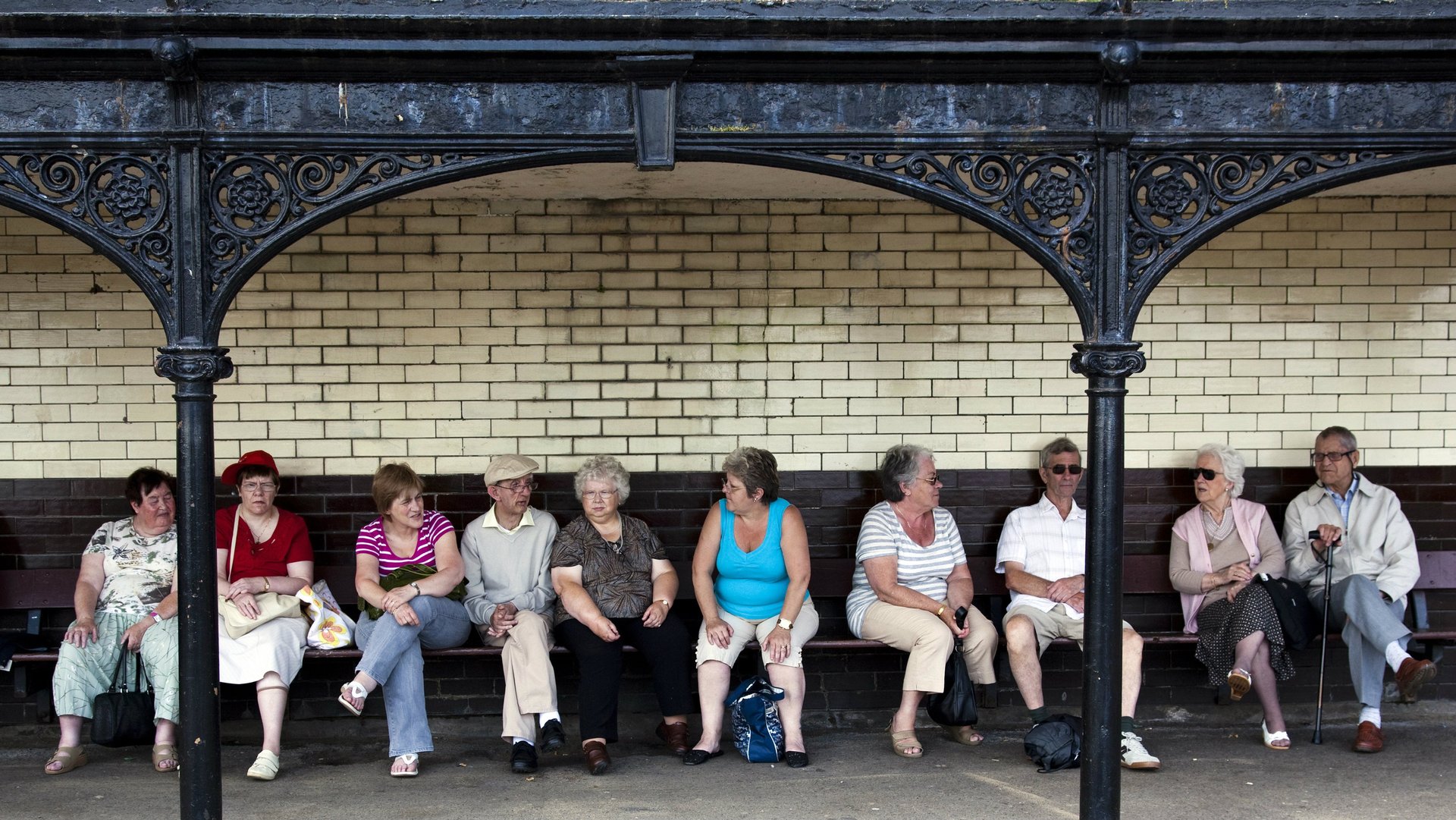A stark illustration of the generational divide in income growth
The UK, like other big economies, is slowly shaking off the shackles of the 2007-08 global financial crisis. The median disposable income for British households was £1,000 ($1,215) higher in 2016 than before the crash. But this modest rise hasn’t been dished out evenly.


The UK, like other big economies, is slowly shaking off the shackles of the 2007-08 global financial crisis. The median disposable income for British households was £1,000 ($1,215) higher in 2016 than before the crash. But this modest rise hasn’t been dished out evenly.
The median income of retired households in the UK has jumped by 13% since 2008. For working families, disposable income is still 1.2% lower than before the crisis, according to the Office for National Statistics.
This 13% increase means retired households have £2,500 more to spend than in 2008. Everyone else, meanwhile, is £300 worse off. Happy New Year!
One of the reasons behind the faster growth among retirees is the rise in people who have private pensions. Additionally, the introduction of a ”triple lock” for state pensions in 2010 has boosted incomes by guaranteeing a minimum increase of 2.5% a year. (The triple lock is so costly, some government officials want it scrapped.)
Working households, by contrast, have seen their paychecks stagnate over the past decade. The Bank of England said recently that inflation-adjusted wage growth hasn’t been this slow since the 19th century. The recent disconnect between income growth among workers and retirees is particularly stark when plotted over a longer period of time:
Despite the disparity in growth rates, working households still make more than retired ones. In 2016, the median disposable income for non-retired households was £28,500, versus £21,800 for retired ones. This gap, however, is closing.